Nepal situated in the heart of the majestic Himalayas is a land of incredible cultural diversity. Among its numerous ethnic groups, the Newar people shine as a vibrant and ancient community, contributing significantly to Nepal’s cultural heritage. With a history spanning over two millennia, the Newar people have played a significant role in shaping Nepal’s cultural, artistic, and architectural heritage.
In this blog, we will take a close into the fascinating world of the Indigenous Newar people, exploring their unique traditions, rich history, and enduring cultural practices.
History of Newar
The Newar people are the indigenous inhabitants of the Kathmandu Valley, tracing their roots back over two millennia. Believed to have migrated from various parts of India, the Newars established city-states in the valley, forming a prosperous civilization known as Nepal Mandala.
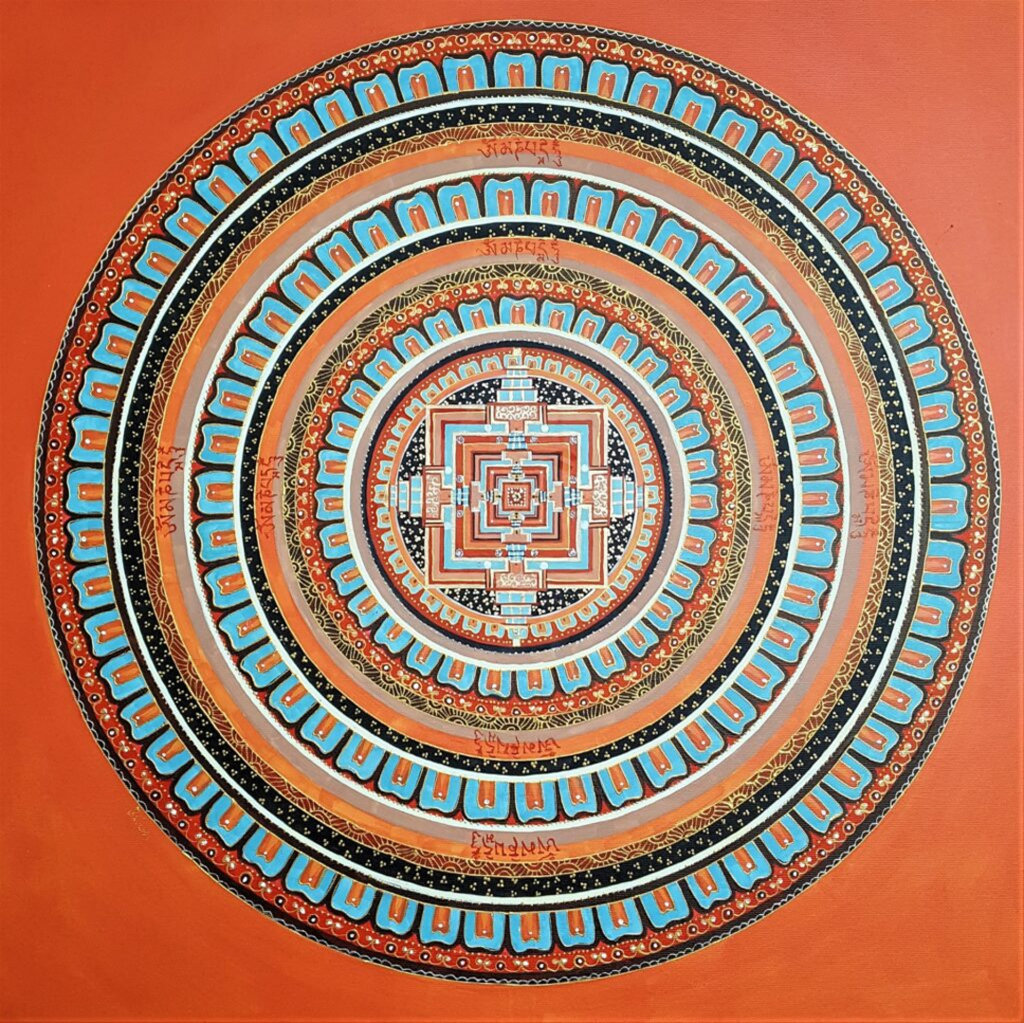
Their legacy is evident in the architectural marvels and cultural practices that have withstood the test of time.
Newari Culture and Tradition
Let’s take a look into the fascinating culture and traditions of the Newar people, exploring their festivals, architecture, and more.
Also Read: All about Trekking Junction, Besisahar
Festivals that Illuminate the Newar Calendar
The Newar community celebrates numerous festivals throughout the year, reflecting their religious and cultural diversity. The vibrant festival of “Bisket Jatra” heralds the Nepali New Year and involves the pulling of a chariot, accompanied by traditional music and dance.
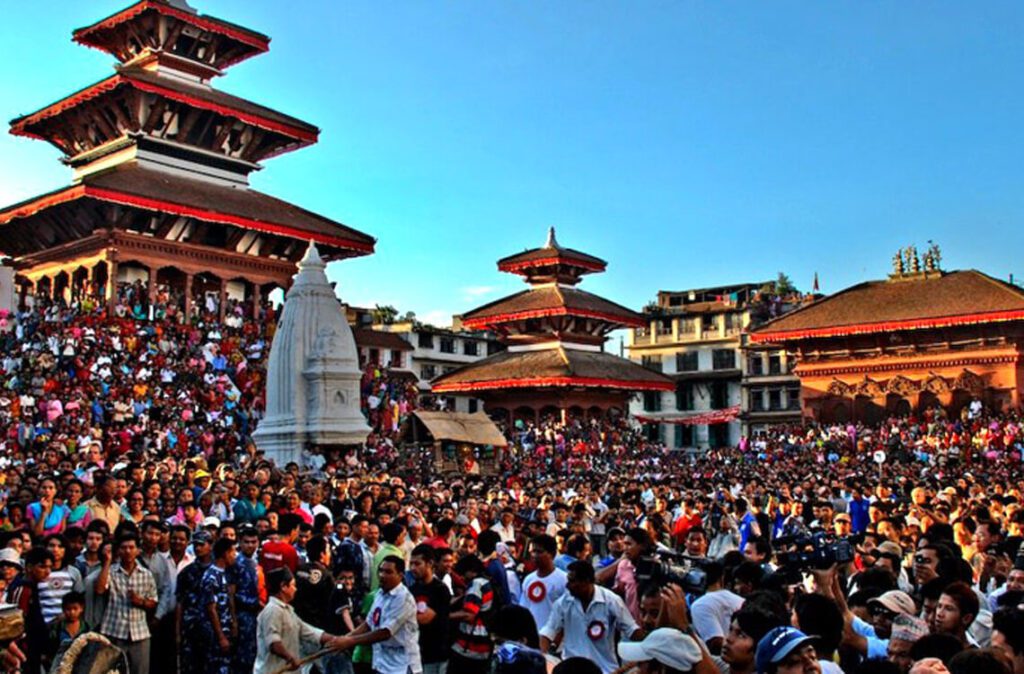
“Indra Jatra” pays homage to the King of Heaven, Indra, and features masked dances, processions, and the chariot-pulling of the Living Goddess Kumari.
The Magnificent Newari Architecture
The Newar people are known for their exceptional architectural heritage, exemplified by the temples, palaces, and courtyards of the Kathmandu Valley.

The renowned Durbar Squares of Kathmandu, Patan, and Bhaktapur proudly display intricate woodcarvings, pagoda–style temples, and ancient royal palaces, reflecting the Newari craftsmanship and artistry that has stood the test of time.
The Living Cultural Heritage
The Newar people have safeguarded their cultural heritage through generations, preserving traditional music, dance forms, and craftsmanship. “Pulu Kisi,” a traditional Newari musical ensemble, accompanies religious processions and festivities, adding an enchanting rhythm to the atmosphere.
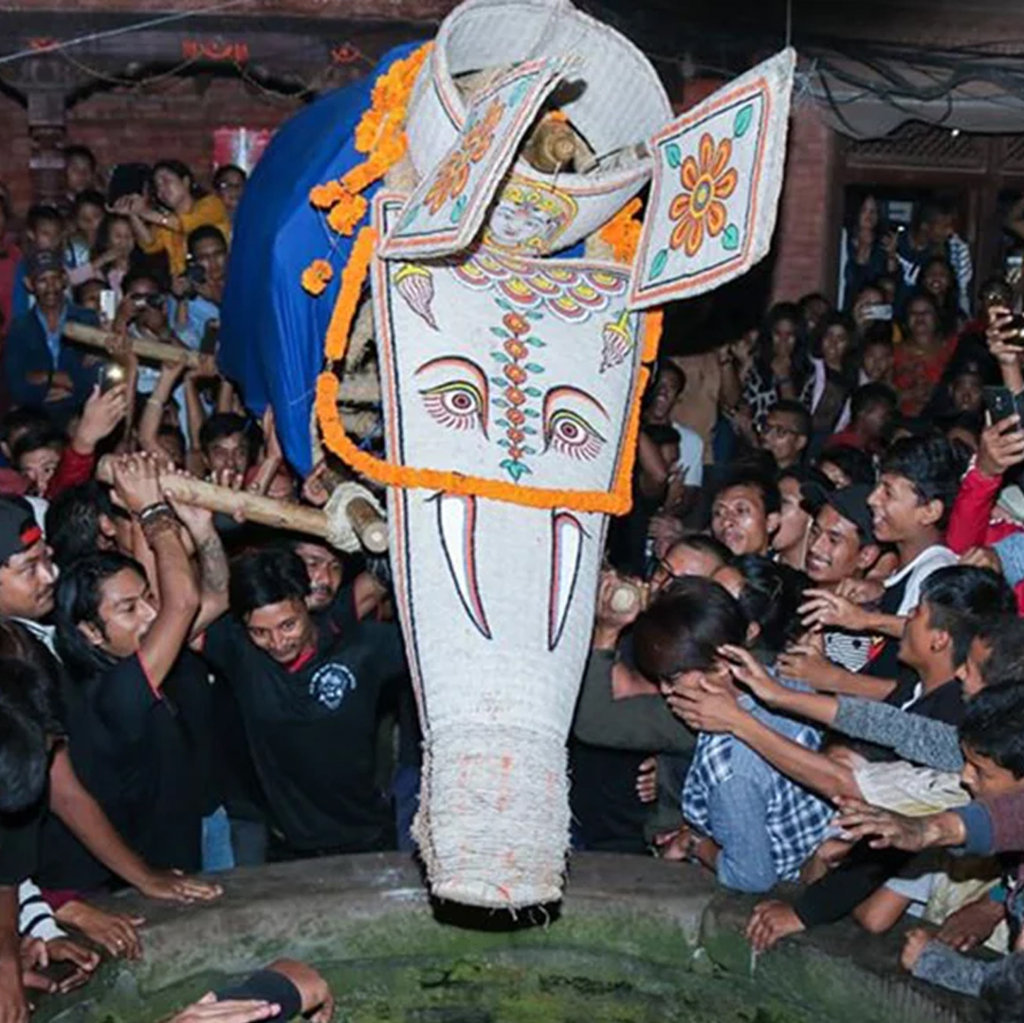
The art “Paubha” painting depicts religious themes on cloth canvases.
Ceremonial Rituals and Beliefs
The Newar community is deeply rooted in religious practices and rituals. The “Ihi” ceremony marks the coming-of-age of Newar girls, symbolizing their transition into womanhood. “Bara,” a significant ritual involves the preparation and consumption of a special lentil pancake, believed to bring good fortune to the family.

These ceremonies exemplify the Newar people’s belief in the preservation of their cultural identity and communal harmony.
Newar Language and Scripts
The Newar people have their own language called “Newari” or “Nepal Bhasa.” It has its unique script known as “Prachalit Lipi,” which has been used for centuries in writing and preserving literary works, scriptures, and historical records.
You may also like: What makes Nepal different than other countries
The Newar language and script are an integral part of their cultural identity and continue to be used and celebrated by the community.
Newar Weddings and Marriage Customs
Newar weddings are steeped in tradition and symbolism. The “Bel Bibaha” ceremony involves the marriage of pre-pubescent girls to the fruit-bearing “Bel” fruit, signifying their future marital life.
The elaborate “Janti” procession, featuring the groom’s family members and musical bands, is a highlight of Newar weddings. These customs highlight the significance of marriage within the community.
Newar Population in Kathmandu
The Newar community is one of the largest ethnic groups in Kathmandu, the capital city of Nepal with 24.7%. They have a rich cultural heritage and have played a significant role in the development of the city.
Newari Dress and Ornaments
Steeped in history and adorned with vibrant colors, Newari attire is a visual spectacle that embodies the essence of this ancient community. Let’s take a closer look at it.
Haku Patasi for Women
Haku Patasi stands as a tribute to the elegance, tradition, and remarkable craftsmanship of the Newari people. With its black color and vibrant borders, this graceful ensemble weaves together centuries-old customs and symbolism.
More: Sherpa People: Bravest Heroes of Mountains
As Newari women adorn themselves in Haku Patasi, they embody the essence of their community, representing dignity, prosperity, and cultural pride. Through the preservation and celebration of this remarkable attire, the Newari people ensure that their rich heritage continues to flourish and inspire generations to come.
Majestic Men’s Attire
Newari men also have their distinctive traditional dress, known as “Labeda Suruwal.” It consists of a Suruwal (loose trousers), Bhoto (a buttoned jacket), and Topi (a cap). The Labeda Suruwal exhibits a harmonious blend of comfort, style, and cultural heritage.
The Bhoto, with its intricate patterns and embellishments, is a particularly noteworthy element of the ensemble. The Topi, often made of black velvet, serves as a crowning accessory, completing the dignified look.
Festival and Jatra
Let’s take a look into some of the most captivating festivals of the Newar community exploring their significance, traditions, and the joyful atmosphere that thrills the streets during these celebrations.
Bisket Jatra (Nepal Sambat New Year)
The Bisket Jatra, celebrated in the month of April, marks the beginning of the Nepal Sambat calendar, the Nepali New Year. People erect a towering wooden chariot in various locations in the Kathmandu Valley during this nine-day-long festival.

The highlight of the festival is the pulling of the chariot by enthusiastic crowds symbolizing the triumph of good over evil. The chariot procession is accompanied by music, dance, and a vibrant display of traditional Newar attire.
Indra Jatra
Indra Jatra, one of the most significant festivals in the Kathmandu Valley is dedicated to Indra, the Hindu god of rain and king of heaven. Held in September, the festival lasts for eight days and begins with the erection of a ceremonial pole called “lingo” at Basantapur Durbar Square. The highlight of the festival is the Kumari Jatra a procession featuring a young living goddess known as the Kumari.

The streets come alive with masked dancers, traditional music, and the echoing beats of drums. The chariot of Kumari along with the chariots of Ganesh and Bhairava, is paraded through the city amidst much fanfare, accompanied by devotees and onlookers.
Yomari Punhi
Yomari Punhi is a festival dedicated to the delicious and traditional Newari delicacy, the Yomari. People make these dumplings from rice flour dough and fill them with sweet or savory fillings. People celebrate the festival by preparing and distributing Yomaris to friends, relatives, and neighbors.
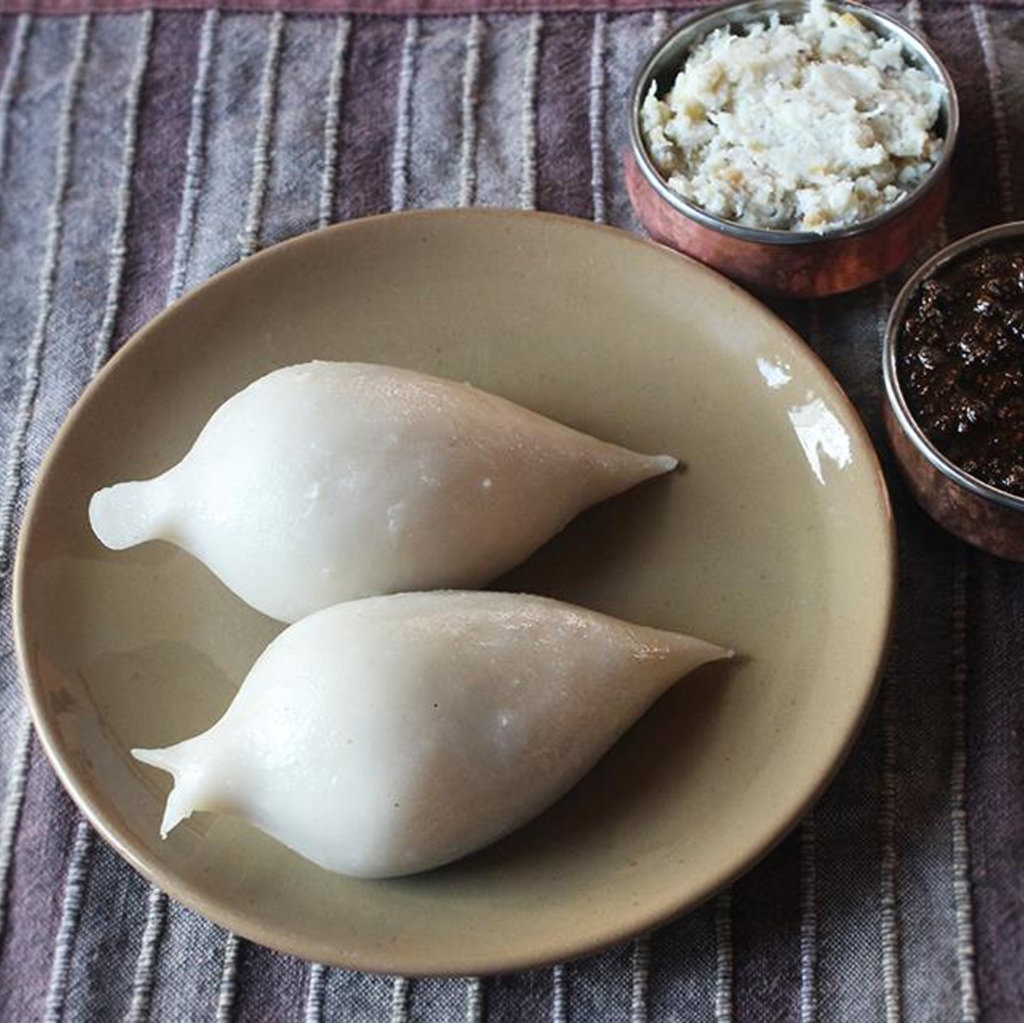
The aroma of freshly steamed Yomaris fills the streets of Newar settlements, and people come together to savor this delectable treat.
Rato Machhindranath Rath Yatra
The annual chariot procession dedicated to the deity Machhindranath is called the Machhindranath Jatra. This month-long festival, held in April or May, includes the construction of a towering chariot in honor of the deity.
Devotees pull the chariot, adorned with colorful decorations, through the streets of Patan, Lalitpur, and Kathmandu. People believe that the festival brings rain and prosperity to the region. Traditional music, dances, and religious ceremonies accompany the chariot procession.
Gai Jatra
Gai Jatra, meaning “cow festival,” is celebrated in August or September as a way to commemorate the departed loved ones. During this festival, families who have lost a member in the past year lead a cow or a young boy dressed as a cow in a procession through the streets.

The cow is considered a sacred animal in Hinduism and is believed to guide the deceased’s soul to heaven. The festival also incorporates humor with people wearing costumes and masks and performing satirical skits to bring joy and laughter to the community.
Mha Puja (Self-Worship)
Mha Puja is a unique and deeply personal festival celebrated by the Newar community on the day of Nepal Sambat New Year, which falls in October or November.
Its meaning literally translates to “Self–Worship.” During this festival, individuals perform a ritualistic ceremony to worship and honor themselves as embodiments of the divine.
Newari Cuisine
Newari cuisine with its rich flavors intricate preparation methods, and cultural significance, offers a gastronomic journey like no other. Let’s take a closer look into the world of Newari cuisine and discover the mouthwatering delights it has to offer.
Samay Baji
Let’s begin our culinary exploration with the quintessential Newari feast, Samay Baji. It is a platter of various dishes that reflects the cultural and religious significance of Newari traditions.
Popular: Exploring the Enchanting Architecture of Nepal
This elaborate meal includes beaten rice (baji), smoked buffalo meat (choela), black soybeans (bodi), fried fish (sanya), fermented mustard greens (Gundruk), and a variety of other accompaniments. The combination of flavors and textures in Samay Baji is a true delight for the taste buds.
Chatamari
People often refer to Chatamari as the Newari pizza, and it is a savory pancake made from rice flour. People top it with a variety of ingredients, such as minced meat, eggs, vegetables, and spices.
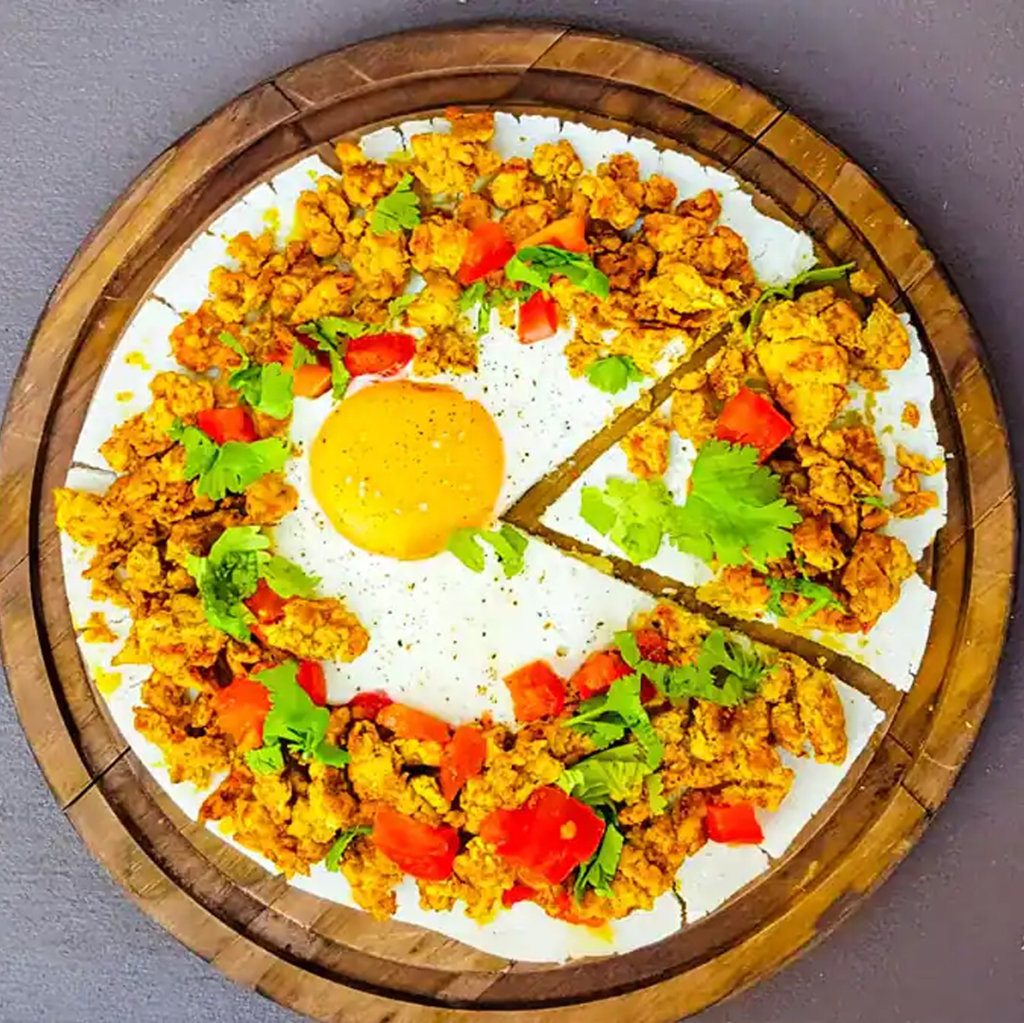
The thin and crispy base, combined with the flavorful toppings, makes Chatamari a popular snack and street food in Nepal. Whether you prefer a vegetarian or non-vegetarian version, this Newari delicacy is sure to leave you craving more.
Yomari
Yomari holds a special place in festivals and celebrations as a unique Newari dessert. People make it by stuffing a mixture of sweetened sesame seeds or molasses into rice flour dough. They then steam or deep-fry the dumpling to perfection.

Yomari has a delightfully chewy texture and a sweet, aromatic filling that will captivate your taste buds. Indulge in this traditional Newari dessert and experience a burst of flavors with every bite.
Choyela
Choyela is a popular Newari appetizer made with marinated meat, usually buffalo or chicken. The meat is first boiled, then marinated with a blend of spices, and finally grilled or roasted to perfection. The result is tender, juicy pieces of meat bursting with flavors.
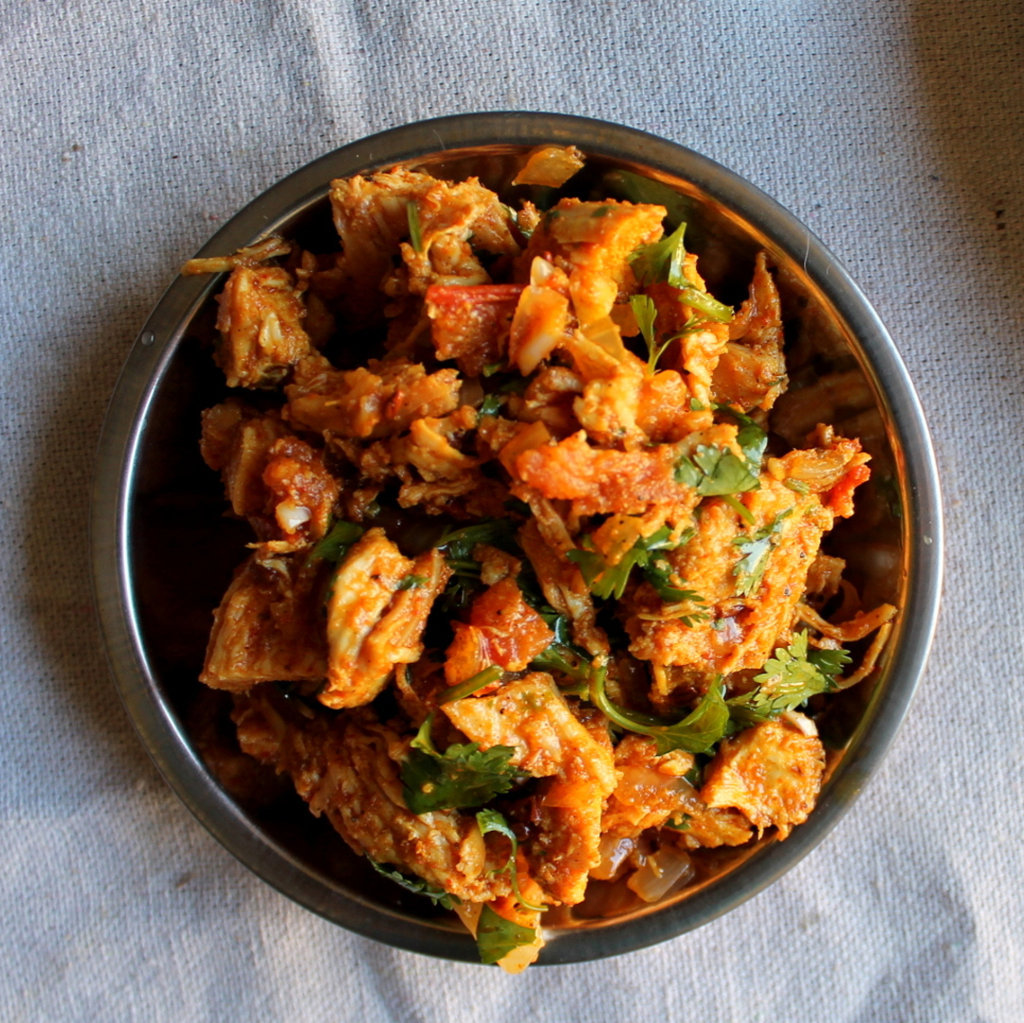
People often enjoy Choyela with beaten rice, mustard oil, and a side of pickles, creating a delightful combination of tastes.
Bara
Bara is a savory lentil pancake that holds a special place in Newari cuisine. Made from a mixture of ground black lentils, ginger, garlic, and spices.

The cook fries Bara to perfection, making it crispy on the outside and soft on the inside. They often serve it with a side of spicy achar (pickle).
Aloo Tama
Aloo Tama is a classic Newari curry that combines tender potatoes and fermented bamboo shoots in a flavorful gravy. Typically, people spice the curry with fenugreek, turmeric, and other traditional spices, resulting in a hearty and comforting dish.
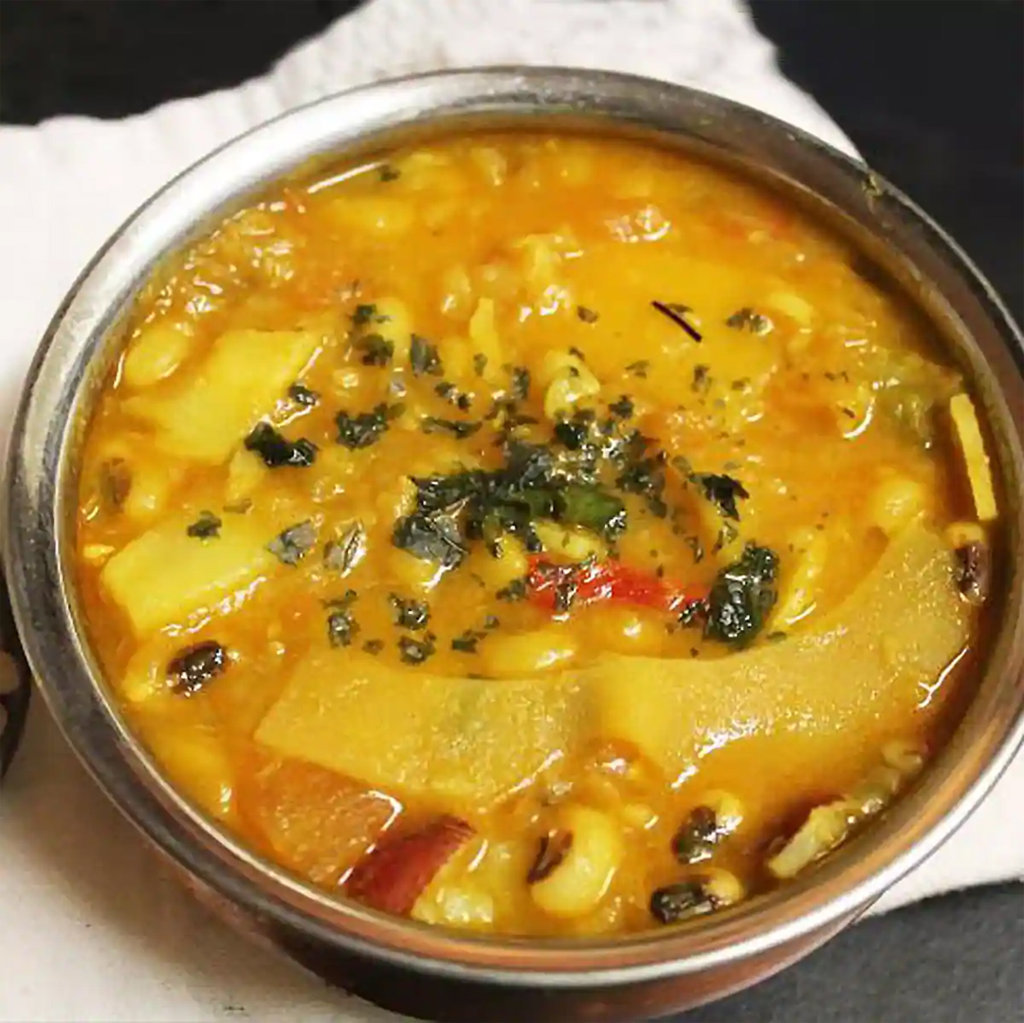
People often enjoy Aloo Tama with rice or as an accompaniment to other Newari dishes.
Newari Architecture
Let’s take a look into the captivating world of Newari architecture exploring its distinctive features, historical significance, and enduring influence.
Cultural Fusion
Newari architecture is a captivating blend of influences from various sources. The Newar people drew inspiration from Hindu, Buddhist, and indigenous beliefs, integrating them harmoniously into their architectural designs. The fusion of these diverse cultural elements has resulted in a unique and captivating architectural style that is unmistakably Newari.
Also Check: Embracing Nepali Culture and Basic Etiquette
Intricate Woodcarvings
One of the defining characteristics of Newari architecture is its elaborate woodcarvings. Skilled artisans meticulously carve intricate patterns, mythical creatures, deities, and ornamental motifs onto wooden pillars, doors, windows, and facades. These masterpieces reflect the Newars’ craftsmanship and their deep reverence for artistry.
Pagoda Style Temples
Newari architecture is best exemplified by its stunning pagoda-style temples. These multi-tiered structures, adorned with intricate woodcarvings and ornate metalwork, serve as religious sanctuaries.
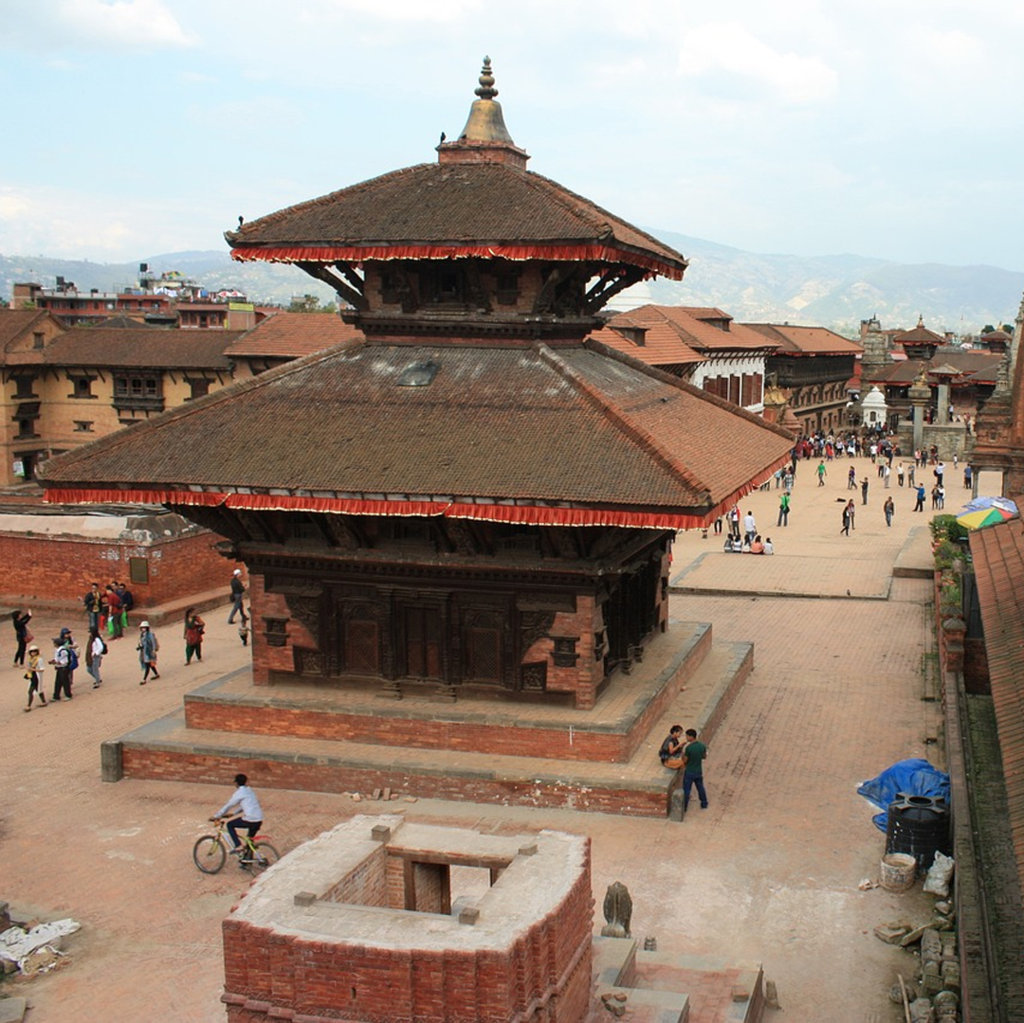
The roofs of these temples curve gracefully upwards, forming towering spires that are unmistakable in the Kathmandu Valley’s skyline.
Durbar Squares
The Durbar Squares, found in Kathmandu, Patan, and Bhaktapur, are vibrant hubs that showcase the splendor of Newari architecture. These squares are home to royal palaces, courtyards, temples, and statues, all featuring the distinctive Newari style.
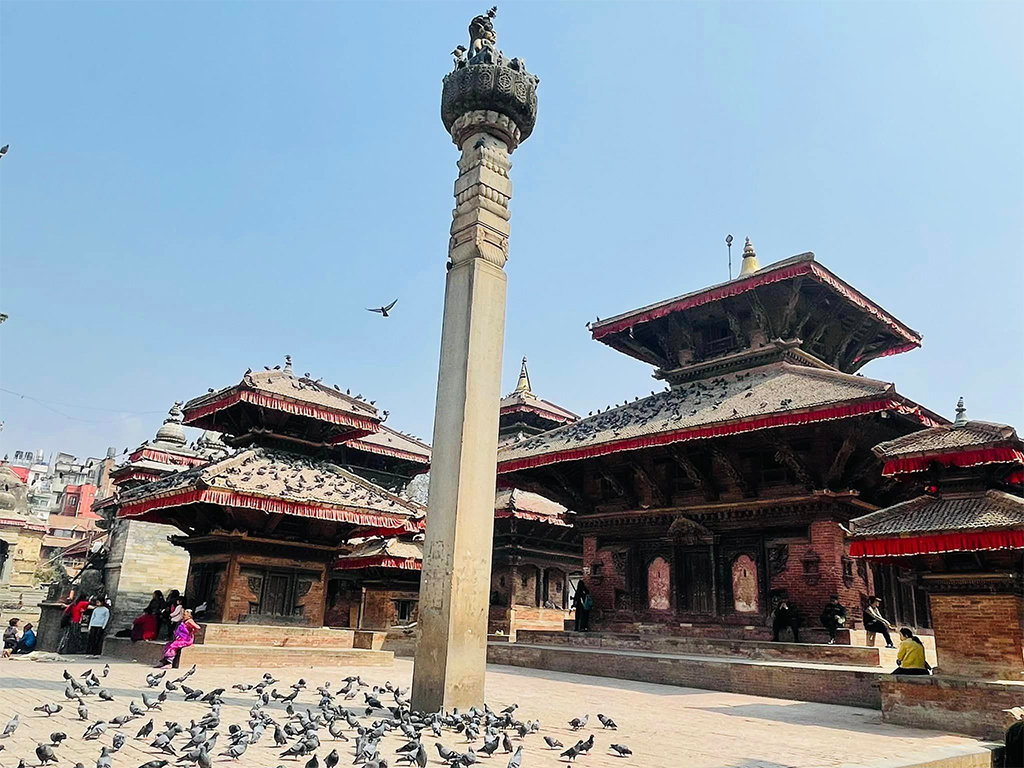
The intricate detailing and craftsmanship found in the Durbar Squares are testaments to the Newars’ architectural prowess.
Goddess Kumari
The Newari Goddess Kumari is an enchanting figure steeped in the ancient traditions of the Kathmandu Valley in Nepal. Known for her unique role in Newari culture, she represents the divine feminine energy that has been worshipped for centuries. Chosen from the Shakya or Bajracharya clan, she embodies the grace and power of deities such as Taleju or Durga.
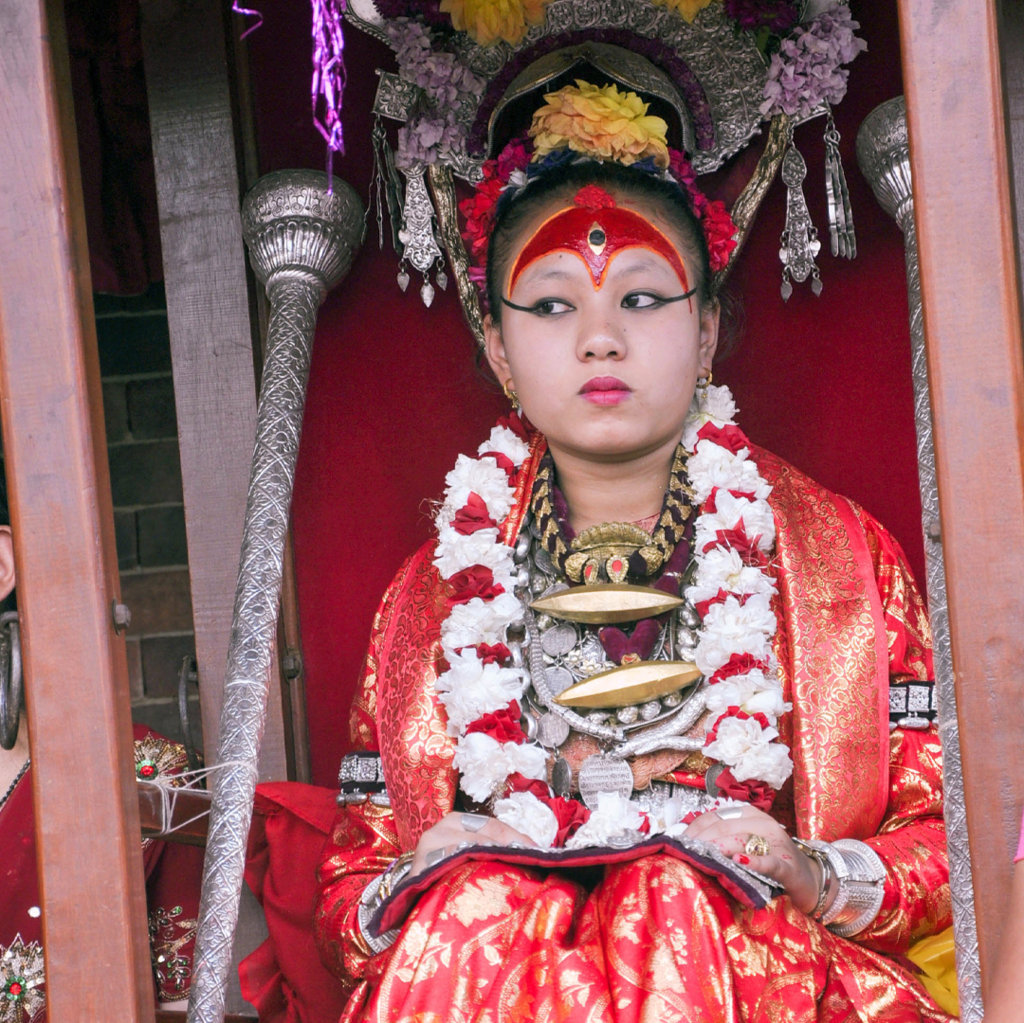
The selection process is meticulous, requiring physical and spiritual qualities, as well as fearlessness and composure. Once chosen, the Kumari becomes a revered living goddess residing in the Kumari Ghar palace and receiving devotees seeking blessings. Her presence during religious festivals and ceremonies, adorned in exquisite attire and surrounded by an air of mystique, captivates the imagination of all who witness her divine presence.
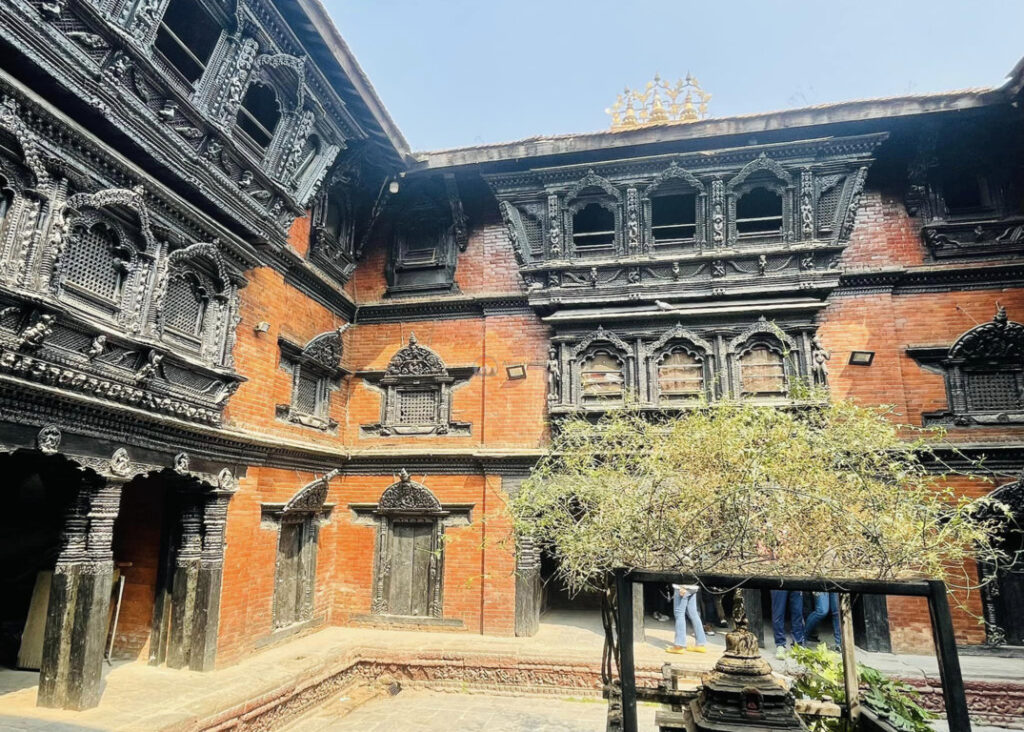
The Newari Goddess Kumari serves as a symbol of ancient wisdom, cultural heritage, and the enduring spiritual connection between mortals and the divine.
Let our expert team at Asian Heritage Treks and Travel take care of everything — from guided tours to personalized packing tips and travel arrangements.
Plan an exciting trip







